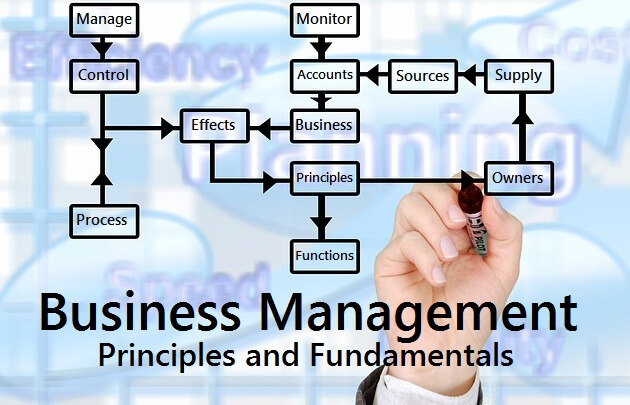We’ve shared tools that can speed up learning, and concepts that can teach entrepreneurs how to learn faster, but you should know that learning is often separated from skill acquisition in the same way that theory is separated from practice. For the purposes of this blog, learning is a way to improve the efficiency of a skill through facts or testing, whereas skill acquisition is improving the ability to perform the desired action at specific quality consistently. In order for you to get the most out of your attempts at skill acquisition, you may want to plan for specific ways to increase your skill acquisition rate.

Do You Really Want It
Before practicing a skill you may want to ask yourself: Do I want this to be a part of me? Will this skill progress me towards my goals? Will it progress me towards a future I want for myself? Developing a skill to a higher level takes a lot of time, and there’s no avoiding that. If you don’t want the skill to be a part of your life you should consider ignoring it.
Ask yourself whether you care enough to answer these four questions as part of your skill development:
- Can I make performing the skill an everyday habit? Every time you learn new information it should show in the performance of an everyday habit.
- Am I willing to put in the time and effort to learn from the best? Be willing to connect with high-performing mentors and commit to hard work every day to improve this skill.
- Can I focus on new learning opportunities over other opportunities? This can be developed by looking for new experiences to improve your skill and experience over other rewards.
- Can I put in the effort to practice? If you decide something interests you and want to make that skill a part of your routine, you should jump into it and assume the passion will come later, as long as the desire to try it is there now.

Faster Ways to Acquire Skills
Now that you are determined to commit long-term to practice something, you should figure out the fastest way to practice that thing. The following methods are similar to those presented by Josh Kaufman in The First 20 hours: How to Learn Anything… Fast as techniques to speed through the skill acquisition stages.
- Focus on a project that can keep you interested. The project could be the thing you are most passionate about or something more practical, but this project should be tied to the skill that you are most interested in developing. For example: If you want to develop communication skills, try communicating with your loved ones until the conversations go as well as you hope.
- Commit to one skill at a time for a longer period of time. It may be that you want to learn one hundred skills, but this will only slow down overall skill acquisition. A single skill contains fragments that can be developed and should probably be focused on in order to come to a clear understanding of how to use that skill.
- Split skills into sub-skills. Every skill is a combination of several concepts, principles, and mechanics called sub-skills. As an example, writing could include grammar, spelling, prosody, meter, rhyme, typing form, writing form, brainstorming, creative thinking, arguing, theme, story structure, and a host of other sub-skills. But what if the practitioner only wants to improve their ability to email their colleagues effectively? Let the desire define what sub-skills should be emphasized. By assigning priority to different sub-skills, it is possible to measure each sub-skill and decide which sub-skill requires focus.
- Develop your expectations. Having a future performance goal helps you find the right information to reach that goal. Occasionally failing to meet a goal is expected, as an 80 percent success with a 20 percent failure means that someone may be pushing themselves to improve. A success rate of 100 percent often means you may not be setting difficult enough goals. However, failure could also just mean bad estimations. Treat improving estimations of performance as part of developing the skill. Before practicing, ask, “How is this going to go? In what roles will everyone participate? How do I fit into that role?” After practicing, ask, “Did it go as I expected? What could I have done differently to achieve a better result? Why did other people who participated do what they did?” If you reach a performance goal, make a new one.
- Obtain important tools. You cannot play tennis without a racket. You can play with a low-quality racket. Find out what tools are essential for developing your chosen skill and which tools remove the consequences of failure and make acquiring those tools a necessary expense.
- Do whatever is necessary to keep the tools ready for use, have everything you need to practice ready, get rid of environmental distractions, and remove as much emotional pain as possible. Focus on doing what you already know and focusing on a single, new, discreet thing.
- Schedule a time to practice. Make it a promise to yourself, then keep practicing. Make practicing a sacred routine, and ritualize it if necessary.
- Get quick feedback. You don’t want to make something and hope it is okay. Find a way to judge quality as an objective measurement and find out if something is genius, terrible, or something in between as fast as possible.
- Practice in 20-minute bursts. Having a 20-minute burst where you are doing all you can to improve your skill can help fit the task within a calendar and allow you to commit as much energy as possible to improving within that burst.
- Emphasize quantity over quality. Assume that the feedback you will get from failing may point out mistakes quickly and thoroughly, and you may even have something to show for it. Focus on small ways to correct your form with each new attempt.

Four Stages of Skill Acquisition
Knowing the stages of skill acquisition may help you understand what to improve at different skill levels. The four-stage model, shown below, based on the model first developed by GTI Employee Noel Burch, is a tool used to quickly help you assess your skill competency. Each stage has a core question, and the ability to answer that question may give you a quick assessment of your level of competence with each skill. Knowing which of the four stages you are heading to next may help you understand how to develop your skills to effectively answer the question.
- Unconscious Incompetence – The core question behind unconscious incompetence is: can you execute the skill correctly? Just jumping into a skill and trying it might teach the motions, but it will not teach you how to judge your actions. It may take the focus of a mentor or self-analysis in order to think about what you are doing correctly. By building a technical foundation and learning how to move, measure, and think about each action you can move out of unconscious incompetence.
- Conscious Incompetence – The core question that surrounds conscious incompetence is: Can you plan around your skill and estimate it correctly? Learning how to plan is the fundamental lesson to solve conscious incompetence. This stage focuses on finding ways to measure the different processes and make confident estimations and reliable plans. Conscious incompetence is complete when you can confidently measure and can conceive of how to use the skill correctly in different situations.
- Conscious Competence – The core question that surrounds conscious competence is: can you conceive of a strategy to unify your skills? Can you unify all the skills together for a common goal? Can you analyze why a strategy was chosen over other strategies? When you feel you can figure out how to use your strategy for every situation, then it is possible to move onto the unconscious competence level of skill development.
- Unconscious Competence – The core question that surrounds unconscious competence is: Can you create opportunities possible out of small changes? Most of the effort while performing the skill at this level is spent on awareness and prediction. This level of competency assumes the ability to execute well in a large majority of instances and presumes the ability to take advantage of minutiae in timing as often as possible.
Let’s use an example skill: sword fighting to illustrate how this mental model might be used.
- Unconscious Incompetence – The swordfighter focuses on the technical execution of swordsmanship and experiments with the sword to discover new uses. to accomplish this they may focus on things like footwork, angles of attack, and other technical matters.
- Conscious Incompetence – The swordfighter begins to have the understanding to judge different situations. The swordsman will be in different situations and begin to make plans to take advantage of those situations, such as developing new ways to take advantage of the moment when two blades collide or figuring out how to exploit the moment when the opponent first comes within range.
- Conscious Competence – The swordfighter can figure out what decisions are most important. Often this comes down to deciding a key metric. As an example when they begin a match, they might say “I’m taller than them, I can get the first attack in an engagement, how do I maximize the number of attacks before my opponent can close in?” This can lead to strategic decisions, such as taking longer lunging strikes and quick retreats to force the opponent to constantly be on the defensive.
- Unconscious Competence – The swordfighter has experienced a lot of different styles. They will often be as aggressive as possible to force the opponent to react and gather information. Based on the information that they gather their style will shift to take advantage of what they believe will give them their greatest chance in the current situation as they gain new information.
By knowing the stages of advancement, and training at the level you feel comfortable you may be able to assess your development with a greater degree of certainty. If you know of a better way to improve, share it with us in the comments below.




